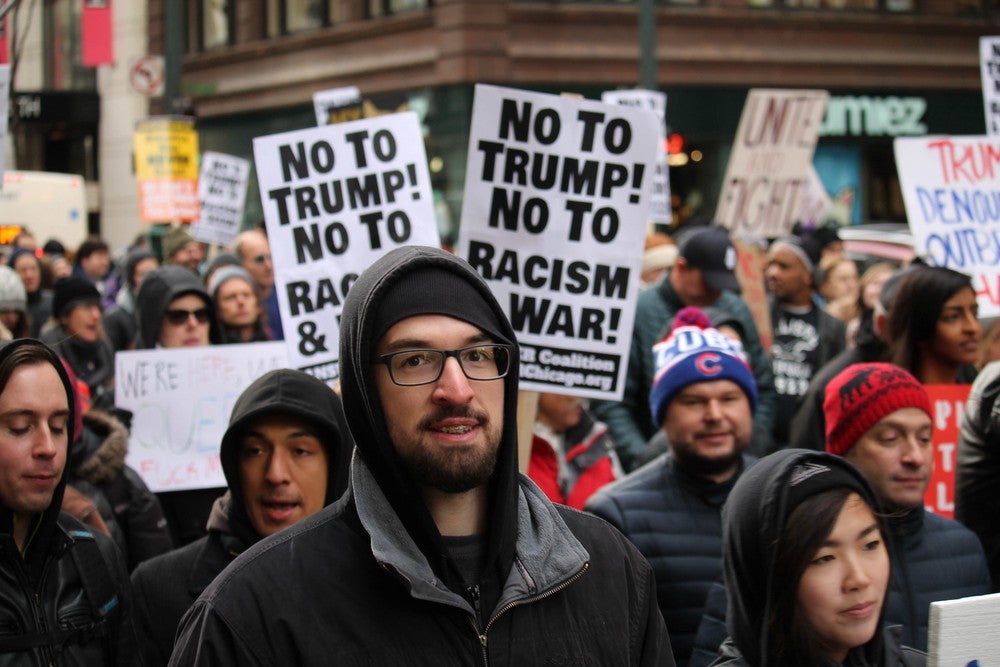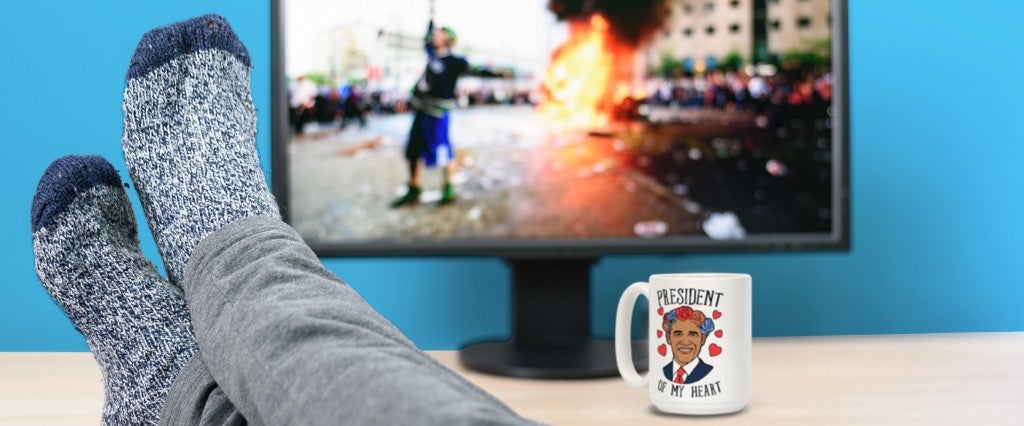The first few weeks of the Trump administration have elicited a frenzy of political activism, as protesters have turned out in historic numbers to oppose the new president and his executive orders — from the record-setting crowds at the Women’s March the day after Trump was inaugurated to spontaneous protests at airports in the wake of Trump’s ban on immigration from seven majority-Muslim countries. Meanwhile, thousands of people are boycotting Uber for its failure to join in the taxi strike at JFK, and constituents all across the country have flooded their representatives with calls opposing the new president’s cabinet nominees, among other things.
The Trump presidency has been an awakening for many on the left. But liberal-leaning men are less inclined to participate in the anti-Trump movement, according to a new Washington Post poll of Democratic Party members. The poll revealed 40 percent of women in the Democratic Party plan to become more involved in politics in the next year, compared with just 27 percent of Democratic men. It’s not that men are historically less politically active. They turned out in droves during the Vietnam War era to oppose being drafted to fight, and so-called Bernie bros helped the candidate pose a meaningful challenge to Hillary Clinton in the Democratic primary last year.
So what accounts for the discrepancy now? Why aren’t as many self-identifying leftie men feeling the urge to get involved?
Men are less threatened by Trump
“A lot of the concerns about Trump are of particular interest to women,” says Emerson College professor Vincent Raynauld, an expert in political communication. Specifically, Trump’s global gag rule banning foreign organizations that receive aid from the U.S. from advising their clients about abortion, or his promise to nominate Supreme Court justices who will overturn Roe v. Wade. And that’s in addition to his lengthy record of publicly disparaging women in the most vulgar terms imaginable, the multiple accusations of sexual assault and the infamous “grab ’em by the pussy” video. All of that is leading to higher rates of political participation among women.

Since men have less at stake, they’re less inclined to protest, Raynauld adds, a difference we’ve seen throughout history. Men (specifically white men) have always been adequately represented in public office, whereas women and other historically disenfranchised groups have had to resort to alternative forms of political participation — such as boycott or civil disobedience — a legacy that continues today.
“Women have a lot more to gain by being politically active, because men have always been in control of the political process,” Raynauld says.
Women rely more on government programs
It’s not just direct attacks on reproductive rights that disproportionately affect women. Women are more affected by government policy, in general, says Debbie Walsh, director of the Center for American Women and Politics at Rutgers University.
“Women make less money, feel more vulnerable and are in greater need of the social safety net. They’re more likely to need government programs — unemployment, family leave, Medicaid, Social Security,” Walsh says. That closer relationship with government equates to higher rates of political participation. It also explains why more women are more likely to be Democrats, as these are largely Democratic Party programs.
President Trump’s pledge to repeal Obamacare will likely have a larger impact on women, for instance. Before the Affordable Care Act became law, insurance companies were able to charge women more for coverage, because the ability to get pregnant was considered a pre-existing condition to many insurers. (Again, for emphasis: Being a woman was considered a pre-existing condition.) But Obamacare outlawed insurance companies from discriminating against people with pre-existing conditions (including gender), making men and women’s coverage costs more equitable.
Obamacare also made certain forms of contraception free for women under its preventive care provision; taking that away will affect women more than men, as well.
Women were already more engaged in social movements
The Washington Post poll results also reflect a gender gap in political participation, more generally. There’s a longstanding history of women turning out to vote in presidential elections in greater numbers than men, Walsh points out. And all the major recent grassroots political movements — Tea Party, Occupy, Black Lives Matter, Fight for 15 — have had “a strong female base,” Raynauld says.
Most of those movements either originated on or have a strong foundation in social media, where women tend to be more active than men. As these social media movements increasingly translate to IRL activism, it makes a certain amount of sense that women would protest in greater numbers, Raynauld says.
https://twitter.com/MartinBelam/status/823637000783798272
Women aren’t just protesting; they’re gearing up to run for office
According to Walsh, Ready to Run — a nonpartisan organization that provides training and encouragement for women looking to run for office — has seen its numbers swell in the wake of Trump’s election win. The Ready to Run chapter at the University of Oklahoma (not exactly a liberal hotbed), has doubled its enrollment, and there have been similar increases at the University of Iowa. Enrollment at the New Jersey chapter is four times higher than usual.
“Across the country, we’ve seen a tremendous increase,” Walsh says. “In response to the election and Donald Trump, there’s a real need among women to make sure their voices are heard.”
